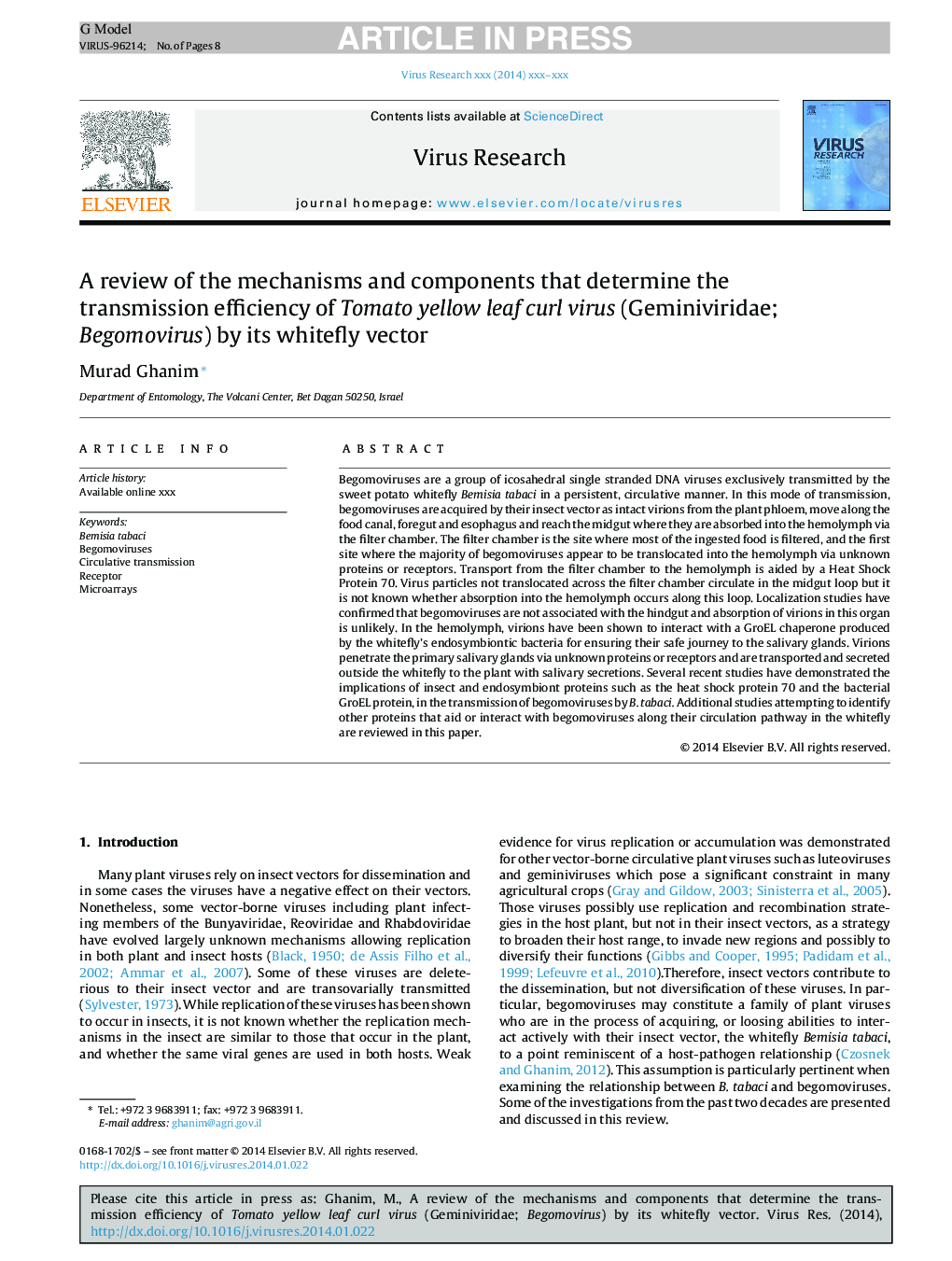| Article ID | Journal | Published Year | Pages | File Type |
|---|---|---|---|---|
| 6142429 | Virus Research | 2014 | 8 Pages |
Abstract
Begomoviruses are a group of icosahedral single stranded DNA viruses exclusively transmitted by the sweet potato whitefly Bemisia tabaci in a persistent, circulative manner. In this mode of transmission, begomoviruses are acquired by their insect vector as intact virions from the plant phloem, move along the food canal, foregut and esophagus and reach the midgut where they are absorbed into the hemolymph via the filter chamber. The filter chamber is the site where most of the ingested food is filtered, and the first site where the majority of begomoviruses appear to be translocated into the hemolymph via unknown proteins or receptors. Transport from the filter chamber to the hemolymph is aided by a Heat Shock Protein 70. Virus particles not translocated across the filter chamber circulate in the midgut loop but it is not known whether absorption into the hemolymph occurs along this loop. Localization studies have confirmed that begomoviruses are not associated with the hindgut and absorption of virions in this organ is unlikely. In the hemolymph, virions have been shown to interact with a GroEL chaperone produced by the whitefly's endosymbiontic bacteria for ensuring their safe journey to the salivary glands. Virions penetrate the primary salivary glands via unknown proteins or receptors and are transported and secreted outside the whitefly to the plant with salivary secretions. Several recent studies have demonstrated the implications of insect and endosymbiont proteins such as the heat shock protein 70 and the bacterial GroEL protein, in the transmission of begomoviruses by B. tabaci. Additional studies attempting to identify other proteins that aid or interact with begomoviruses along their circulation pathway in the whitefly are reviewed in this paper.
Related Topics
Life Sciences
Immunology and Microbiology
Virology
Authors
Murad Ghanim,
